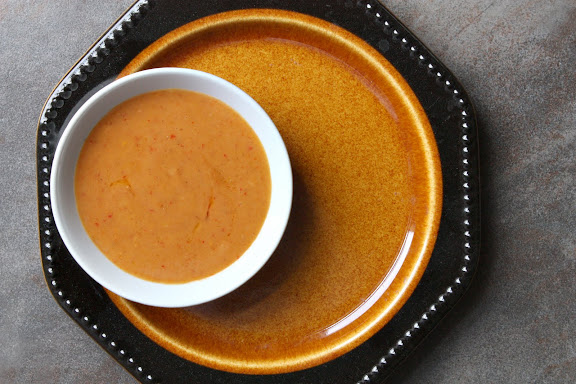
In keeping with the simplicity of this ingredient, I’m going to skip my usual rambling and go straight to the instructions on how to make toasted rice powder (ข้าวคั่ว).
However, before we get there, please let me state this. Whenever a Thai recipe calls for toasted rice powder, even just a smidgen of it, don’t be tempted to leave it out. Don’t get me wrong; I am all about shortcuts and convenience as long as the quality is not severely compromised. But when it comes to toasted (sometimes called ‘roasted’) rice powder, in my opinion, it is never optional. This insignificant-looking khao khua is what differentiates a vaguely Thai-inspired dish from what a Thai mother serves her family somewhere in Thailand as we speak.
Not only does toasted rice powder serve as the source of the “nutty,” toasty flavor that defines certain dishes, but, in some cases, it also functions as the binder/thickener/emulsifier/filler/moisture-retainer much like what modified starch does in industrial food applications.
For your convenience, ready-made toasted rice powder is available in many Asian grocery stores, especially ones specializing in Southeast Asian ingredients. But if you can’t find it in the store, you can make toasted rice powder at home in a jiffy. You only need three things to make all this happen: a skillet, a coffee grinder (or a set of granite or glazed terracotta mortar and pestle), and the right type of rice, namely Thai sticky or glutinous rice. Some people say regular long grain rice works just as well, but I disagree. Long grain rice is much more dense than glutinous rice, and while the latter melds seamlessly into the dish, the former tends to create the undesirable gritty texture.
I usually make a small batch—about half a cup of raw rice—at a time to ensure freshness as this is an ingredient I use very little of and not very often. You want to start by setting a skillet over medium-low heat, then add the rice into the skillet and stir and shake every few seconds to make sure the grains are evenly toasted. (Do not be tempted to use high heat to speed up the process, your rice will only be undercooked on the inside and burnt on the outside. And since burnt equals bitter, you don’t want that.)
After 10 minutes or so, the grains will turn medium brown. (They should now resemble brown rice in color.) Remove the skillet from heat and let the rice cool completely. Toasted rice fresh off the stove is very, very hot; I wouldn’t touch it with my hand. Grinding toasted rice while it’s still hot is also a bad idea; it could cause the motor of your coffee grinder to overheat if you choose to grind it in a coffee grinder.
Once the rice has cooled, grind it in a mortar or a coffee grinder, two tablespoons at a time, until a fine powder is achieved. (The texture of pulverized toasted rice should resemble that of stone-ground wholewheat flour — albeit just a tad coarser.) Store your toasted rice powder in an airtight container and keep in the pantry.












